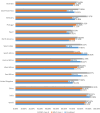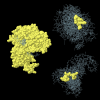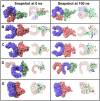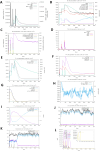A computational approach to design a polyvalent vaccine against human respiratory syncytial virus
- PMID: 37322049
- PMCID: PMC10272159
- DOI: 10.1038/s41598-023-35309-y
A computational approach to design a polyvalent vaccine against human respiratory syncytial virus
Erratum in
-
Author Correction: A computational approach to design a polyvalent vaccine against human respiratory syncytial virus.Sci Rep. 2024 Jul 8;14(1):15721. doi: 10.1038/s41598-024-66721-7. Sci Rep. 2024. PMID: 38977863 Free PMC article. No abstract available.
Abstract
Human Respiratory Syncytial Virus (RSV) is one of the leading causes of lower respiratory tract infections (LRTI), responsible for infecting people from all age groups-a majority of which comprises infants and children. Primarily, severe RSV infections are accountable for multitudes of deaths worldwide, predominantly of children, every year. Despite several efforts to develop a vaccine against RSV as a potential countermeasure, there has been no approved or licensed vaccine available yet, to control the RSV infection effectively. Therefore, through the utilization of immunoinformatics tools, a computational approach was taken in this study, to design a multi-epitope polyvalent vaccine against two major antigenic subtypes of RSV, RSV-A and RSV-B. Potential predictions of the T-cell and B-cell epitopes were followed by extensive tests of antigenicity, allergenicity, toxicity, conservancy, homology to human proteome, transmembrane topology, and cytokine-inducing ability. The peptide vaccine was modeled, refined, and validated. Molecular docking analysis with specific Toll-like receptors (TLRs) revealed excellent interactions with suitable global binding energies. Additionally, molecular dynamics (MD) simulation ensured the stability of the docking interactions between the vaccine and TLRs. Mechanistic approaches to imitate and predict the potential immune response generated by the administration of vaccines were determined through immune simulations. Subsequent mass production of the vaccine peptide was evaluated; however, there remains a necessity for further in vitro and in vivo experiments to validate its efficacy against RSV infections.
© 2023. The Author(s).
Conflict of interest statement
The authors declare no competing interests.
Figures










References
MeSH terms
Substances
LinkOut - more resources
Full Text Sources
Medical

